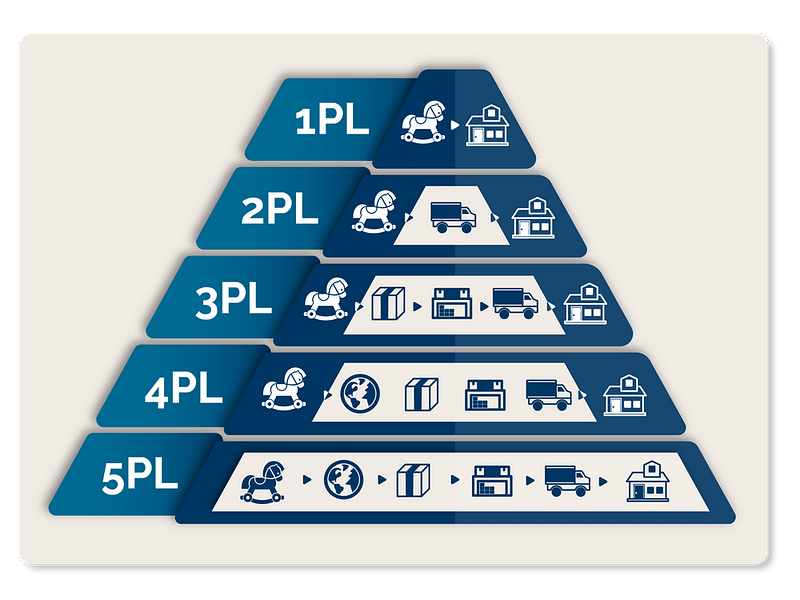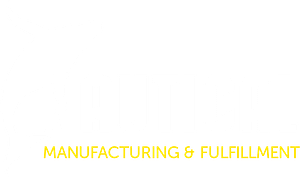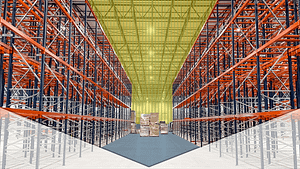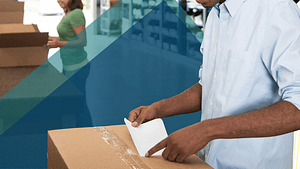Smooth supply chain operations are crucial for ensuring customer satisfaction, and many companies rely on outsourced logistics providers to achieve this goal. These providers come in various levels, each offering something a bit different. Understanding these differences is essential for businesses looking to optimize their logistics operations. Let’s explore each model in detail.
Common Levels Of Logistics Services
Every business is different in how much of the supply chain they want to service directly versus outsource to a third party. Because of this, different layers of the supply-chain model exist and make up the different service levels as described below. Note that a business can exist across different layers on the supply-chain model depending on the products, services, and market factors where they are operating.
First-Party Logistics (1PL)
The most traditional and straightforward level of logistics is a first-party logistics provider (1PL). First party logistics companies provide manufacturing, warehousing, and distribution of their products independently. An example of a 1PL in action could be a farm that gathers eggs and transports them to a local market. This 1PL model is common for smaller production businesses with local distribution channels. This allows the business to have complete control of their supply chain and have no need to outsource.
Second-Party Logistics (2PL)
Once another party is added into the mix of supply chain activities, it becomes a second-party logistics (2PL) model. A 2PL arrangement involves a manufacturing company that outsources transportation services to a secondary partner company. Lets go back to the farm example, at this point the farmer doesn’t have time to transport the eggs to the local market. To fix this, he will reach out to a transportation provider to help these activities. A 2PL is often referred to as a forwarder because their service primarily consists of freight transportation. Most trucking and shipping companies will fall under this logistics type.
Third-Party Logistics (3PL)
Perhaps the most commonly known logistics service providers are third-party logistics companies (3PLs). 3PLs handle all logistics for a manufacturer. 3PLs specialize in integrated operation, warehousing, and transportation services which can be scaled depending on customer needs.
Third-party logistics providers have primary service offerings such as:
- Warehousing
- Inventory Management
- Shipping & Receiving
- Pick & Pack
- Custom Kitting and Other Packaging
- Transportation (LTL & FTL)
Fourth-Party Logistics (4PL)
Fourth-party logistics companies (4PLs) wholly manage the supply chain operations on the behalf of the original company by subcontracting different parts of the supply chain to third-party providers. Typically, these 4PLs don’t actually have the physical assets to run day-to-day operations. Instead, they act as a consultant and coordinate all parties necessary to make sure the company’s supply chain runs smoothly. In some cases, 4PLs may have the physical assets to offer the services its clients need. However, it’s important for these providers to stay impartial and work in the best interest of their partners at all times, even if it means loss of profit for the 4PL not utilizing its own facilities or services.
Fifth-Party Logistics (5PL)
A fifth-party logistics (5PL) model is similar to a 4PL. They are still a consultant but instead of just looking at individual supply chains, they use big data to achieve operational optimizations. They will typically look at a wider scope focusing on supply networks as a whole. The 5PL service provider becomes integrated into their client’s supply chain helping them find better rates for all supply-side services. Because of this, for this model and all following levels, constant communication and trust is essential to ensure a smooth partnership.

The Future Levels Of Logistics Services
The complexity and level of services outsourced has grown exponentially thanks to continuous technological advancements in the 21st century. There are additional levels of service that are also emerging as improvements in systems, networks, and capabilities become viable.
Sixth-Party Logistics (6PL)
While a 6PL model is yet to be fully developed, it leans on a partially-AI automated supply-chain solution to give companies a competitive edge. Using AI, a 6PL monitors the supply chain using data like ordering patterns and forecasting models to execute the most efficient logistics operations possible.
Seventh-Party Logistics (7PL)
A seventh-party (7PL) provider combines the service offerings of both a 3PL and a 4PL. This model can be very attractive to clients due to the combined capability and service mix it provides: the operational capabilities of a 3PL (fulfillment, warehousing, and transportation) and consultation and coordination skills of a 4PL. A 7PL company can be described as a “one-stop shop” for companies that want to keep all their supply chain operations under one umbrella, greatly reducing the complexity of working with multiple different partners.
8PL, 9PL, And 10PL
There are additional levels of service beyond 7PL that aren’t currently available. These layers are instead previews of how the landscape of supply-chain operations may evolve in the future.
8PL: A high-level logistics supergroup that aggregates supply networks to propose logistics solutions through analysis of large amounts of data.
9PL: Described as a crowd-sourced solution for last-mile deliveries.
10PL: Refers to a fully self-aware supply chain that can run itself
Nautical – Your All In One Logistics Partner
Nautical is a 3PL provider with 4PL and 5PL service capabilities. As an all-in-one, fully integrated supply chain solution, we leverage our network of companies to provide custom product development, freight solutions, and expert 3PL solutions out of our fulfillment center. If your business needs support anywhere along the supply chain, reach out today to learn more about our service set!




